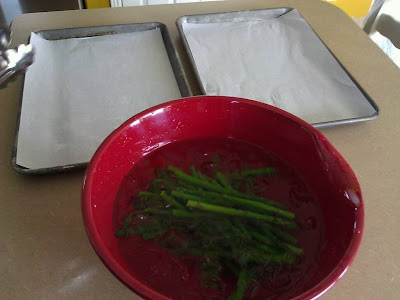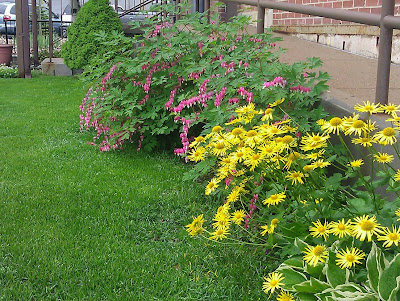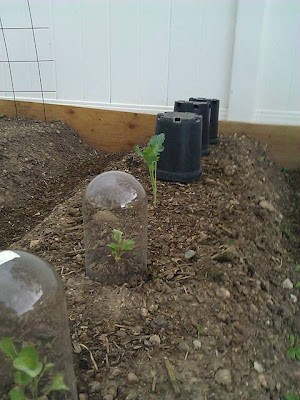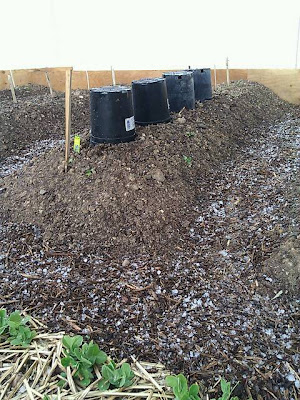Small minds just don't get it...
Yesterday afternoon we found a neat and tidy little note left taped to our next-door neighbors bedroom window facing our house especially for us to read.
 It probably should have made our mouths drop open, but it didn't. Not because we understood their position by any means, more to the fact that it didn't surprise us that these people would do something so frickin chicken shit as leave a sign up rather than to come over and talk with us.
It probably should have made our mouths drop open, but it didn't. Not because we understood their position by any means, more to the fact that it didn't surprise us that these people would do something so frickin chicken shit as leave a sign up rather than to come over and talk with us.
Now, first things first, I don't necessarily mind the term hillbilly because, with a wife from the hills of West (by God) Virginia I have come to know many hillbillies rather intimately and they are among the finest people I've had the pleasure of knowing. My dear wife however does point out that she prefers the term Appalachian American particularly when Hillbilly is being used in the pejorative.
The light to which our neighbor refers is really a non-issue as well, let me explain. We have a back door to our garage that is far from any room of our house that an intruder or burglar could easily use to get access to the rest of our home. After having our car broken into right in our driveway, we made sure to have a light on above our back door as well. It's a safety issue that we are not willing to stop. We've explained to our neighbors that we are sorry, but we're not willing to risk having a secluded entry to our house unlit through the night.
The greater part of this was referencing our "white trash yard". Despite desires to expand our little "homescale farm" into our front yard we have opted to play along. By that I mean that we have maintained the "little boxes made of ticky tacky" appearance for the most part in our front yard as well.
 So I could only assume it is to our backyard that they were referring. That and/or our side yard garden where we grow different crops from one year to the next. I was right.
So I could only assume it is to our backyard that they were referring. That and/or our side yard garden where we grow different crops from one year to the next. I was right.
My wife went over to talk with Neighbor "A" about this sign and was told that they just can't stand having to look at our yard. My wife was curious as to why of course and that's when we got the picture loud and clear: because we are different. Of course they didn't come out and say it in as many words, but it was damn near from what I understand. They were simply incredulous that would have the gall to grow corn in our front side yard
 I really like it there honestly... and this is the worst it looked all year. We had been gone for a week and then I had surgery and was forbidden from working in the garden for another week and a half so there were some weeds, but really it is well kept up, it's just the fact that we grow food. Can you even believe that? They literally said, "Why can't you just be like everybody else? You shouldn't have moved to this neighborhood if you wanted to live this way!" By "this way" I take them to mean keeping chickens and raising 800+ pounds of food from my gardens. To them it makes me and my family white trash to use our private property to grow and support ourselves with organic fresh foods from a backyard garden.
I really like it there honestly... and this is the worst it looked all year. We had been gone for a week and then I had surgery and was forbidden from working in the garden for another week and a half so there were some weeds, but really it is well kept up, it's just the fact that we grow food. Can you even believe that? They literally said, "Why can't you just be like everybody else? You shouldn't have moved to this neighborhood if you wanted to live this way!" By "this way" I take them to mean keeping chickens and raising 800+ pounds of food from my gardens. To them it makes me and my family white trash to use our private property to grow and support ourselves with organic fresh foods from a backyard garden.  If that's the case I can live with it.
If that's the case I can live with it.
The disappointing part really, is not so much that these people don't like us, they're arrogant asses, I don't really care. What surprises and disappoints me is that apparently they've been going around and commiserating with a number of our other neighbors and it's almost unanimous that we are trashing up their neighborhood with our gardens and our crazy out of the box thinking!! I just refused to believe the stories about neighborhoods that were so close minded that a person was ridiculed for taking care of his family or daring to rely more on their own efforts.
So far the list of complaints as we understand them are our corn, our sunflowers (yes, they can't stand seeing the sunflowers in our yard and hate that they attract bees - isn't that kind of the point??), our gardens and our clothes line. All of which besides the corn are behind a 6 foot solid fence?!
It sucks to be surrounded by people that just don't get what we're all about, but then again they've never tried to get to know us either. It won't deter us though, we'll still keep on with our way of living and probably even expand it.
Say? How do you think they're going to feel about the two beehives we're planning on adding next year??
Take care all, keep growing your own and marching to your own beat!
P~





































 The Honey and water wort (The base of the recipe)
The Honey and water wort (The base of the recipe) The "additives" like irish moss, gypsum and spearmint tea...
The "additives" like irish moss, gypsum and spearmint tea... Adding the pears for sugar and bouquet. (If you're going to learn to make mead, you should of course learn from a man with celtic knots on his arms yes?)
Adding the pears for sugar and bouquet. (If you're going to learn to make mead, you should of course learn from a man with celtic knots on his arms yes?)













